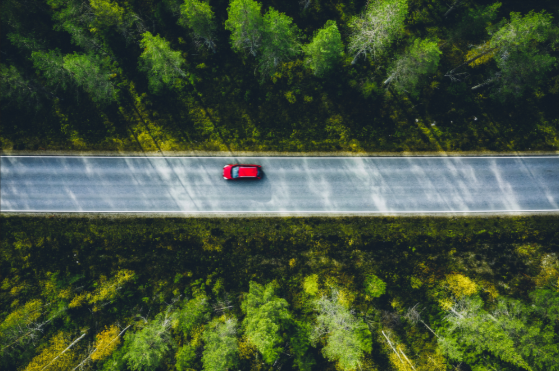A Canadian road trip promises breathtaking landscapes, vibrant cities, and serene rural escapes. With vast territories to explore, planning the perfect road trip can ensure an adventure that’s memorable, scenic, and packed with the best places to visit in Canada. Whether it’s your first time in the Great White North or you’re returning to see more, these tips and routes will set you up for an epic journey.
1. Choose Your Route Based on Interests and Timing
Canada’s diverse regions offer something for everyone. From the rocky shores of the Maritimes to the towering peaks of the Rockies, your route should reflect your interests, timeframe, and preferred travel style.
Popular Routes to Consider:
- The Cabot Trail, Nova Scotia: Known for its coastal beauty, this loop around Cape Breton Island offers ocean vistas, hiking trails, and cultural experiences. It’s one of the best places to visit in Canada for first-timers who want a taste of the Atlantic’s raw beauty.
- Icefields Parkway, Alberta: Linking Banff and Jasper National Parks, this road is a must-drive for those looking to experience Canada’s Rocky Mountains. It’s especially popular during the summer, making it one of the best summer destinations in Canada.
- Trans-Canada Highway, Coast to Coast: If time allows, the cross-country route from the Pacific to the Atlantic showcases a bit of everything Canada has to offer.
2. Best Time to Embark on a Canadian Road Trip
The season can dramatically shape your road trip experience. For most routes, summer (June to September) offers the warmest weather and longest days, ideal for exploring Canada’s outdoor spaces and vibrant cities.
- Summer: This is peak road trip season, with the warm weather making it the best time to explore destinations like Banff, Prince Edward Island, and Quebec City. The best summer destinations in Canada are bustling, with festivals, events, and endless outdoor activities.
- Fall: Late September to early October brings cooler weather, fewer crowds, and Canada’s famous autumn foliage. This is the perfect season for routes like Ontario’s Algonquin Park and Quebec’s Laurentian Mountains.
- Winter: Although challenging, winter road trips can be a unique way to explore Canada’s snowy wonderlands. Popular destinations include Whistler in British Columbia, known for skiing, and Quebec’s Charlevoix region.
3. Essentials for a Comfortable and Safe Journey
Preparing your vehicle and packing wisely are crucial for any successful road trip. Canada’s remote stretches mean fewer gas stations, motels, and amenities, so it’s best to be ready for any scenario.
- Plan Your Fuel Stops: Research fuel stations along your route, especially when heading into rural or mountainous areas.
- Emergency Kit: Bring essentials such as a first aid kit, flashlight, extra water, and non-perishable snacks. In winter, additional items like blankets, tire chains, and extra gloves are advisable.
- Navigation Tools: Cell service can be unreliable in remote areas, so consider downloading offline maps or bringing a GPS.
4. Must-See Destinations for First-Time Road Trippers
If you’re new to Canada, these are some must-see destinations that capture the country’s natural and cultural diversity.
- Banff and Lake Louise, Alberta: Nestled in the Rockies, this area is famous for its turquoise lakes and majestic peaks. Banff and Lake Louise are two of the best places to visit in Canada for first-time travelers.
- Prince Edward Island: Known for its beaches, quaint towns, and lobster cuisine, PEI is a picturesque destination best enjoyed in summer.
- Toronto to Niagara Falls: This quick and scenic drive from Toronto to Niagara Falls takes you from Canada’s largest city to one of the world’s most iconic waterfalls.
- The Laurentians, Quebec: Just north of Montreal, the Laurentians are an ideal mix of nature and culture with cozy villages, lakes, and endless hiking opportunities.
5. Capturing Canada’s Natural Beauty Along the Way
Canada is renowned for its photogenic landscapes. Whether it’s the jagged peaks of the Rockies or the serene shores of Georgian Bay, a road trip through Canada provides countless opportunities to capture unforgettable photos.
- Sunrise and Sunset Stops: Plan your route to include some sunrise or sunset stops for perfect lighting over iconic landscapes like Peggy’s Cove, the shores of Lake Superior, and the Badlands in Alberta.
- Lookout Points: Many Canadian highways feature lookout points where you can safely pull over and enjoy panoramic views. Notable lookouts include Mont Tremblant in Quebec and the Sea-to-Sky Highway in British Columbia.
6. Engaging with Canadian Culture
A Canadian road trip is not only about nature; it’s also an invitation to experience the diverse and rich culture across the provinces.
- Local Festivals: During summer, Canadian cities and towns are bustling with festivals, music, and cultural events. Quebec City hosts one of North America’s largest summer festivals, while Prince Edward Island’s events often revolve around seafood and maritime heritage.
- Indigenous Heritage Sites: Consider visiting sites like the Head-Smashed-In Buffalo Jump in Alberta or the Many Chief Tours in Saskatchewan to learn about Indigenous history and culture.
- Cuisine Highlights: Each region has distinct culinary offerings, from fresh Atlantic lobster to Ontario wine country. A culinary road trip can be a unique way to explore Canada’s cultural tapestry.
7. Make Use of Canada’s Roadside Amenities
Roadside attractions are scattered across Canada, adding a quirky charm to any trip. Here are a few you might come across:
- The World’s Largest Lobster in Shediac, New Brunswick
- The Big Nickel in Sudbury, Ontario
- The Giant Ukrainian Easter Egg in Vegreville, Alberta
8. Tips for an Eco-Friendly Canadian Road Trip
As road trips can contribute to environmental impact, consider making yours more sustainable:
- Pack Reusable Containers and Utensils: Avoid single-use plastics for snacks and meals on the go.
- Stay in Eco-Friendly Accommodations: Many Canadian accommodations, like eco-lodges and certified green hotels, prioritize sustainable practices.
- Practice Leave No Trace: Canada’s natural spaces are pristine, and keeping them that way is essential. Ensure all waste is disposed of properly, and follow trail guidelines.
9. Final Preparations: Plan for a Flexible Itinerary
While a well-planned itinerary is essential, flexibility allows you to fully immerse in the spontaneity of a road trip. Canada’s landscapes are best explored at a leisurely pace, allowing time for unexpected stops and extra days in destinations you fall in love with.
Embark on Your Canadian Road Trip Adventure!
Canada’s vast landscapes and diverse culture make it one of the world’s best countries for a road trip. With these tips, routes, and preparation strategies, you’re ready to hit the open road and make unforgettable memories in the Great White North. Pack your bags, prepare your car, and set out on a journey to experience the best places to visit in Canada for first-timers and seasoned travelers alike.











